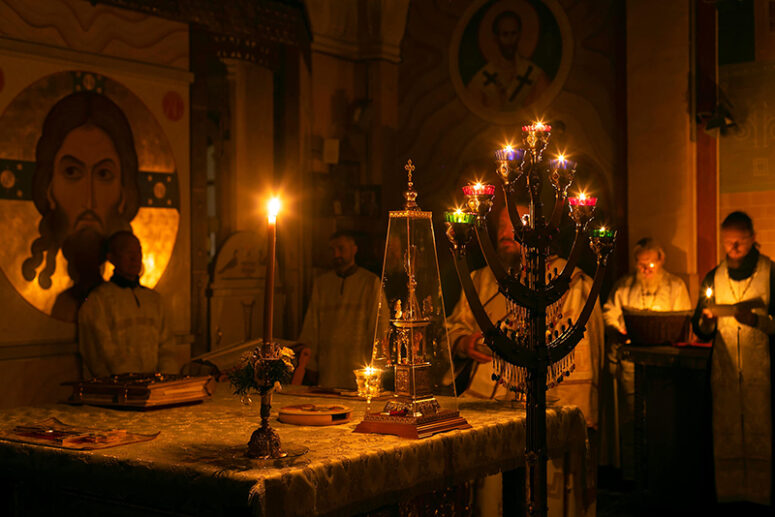
Often we take little notice of the multiple sources of light used in worship. However, they have great liturgical and symbolic significance. Apart from natural ambient light, church illumination includes candles and various types of lamps. The use of illumination in church is regulated by the Typicon. Church lighting may be fully lit, used partially or put out completely, depending on the situation. What is the significance of light and darkness in church? What do the lamps used in worship symbolize?
Light and Darkness in Church
Light in the Orthodox Church, signifies the Divine Light, as well as Christ Himself, “the Light of the world” (John 8:12), the “Light from Light” (the Creed) and “the true light, which enlightens everyone” (John 1:9). This immaterial light differs from the natural light that we see every day.
Ancient Byzantine and Russian churches had very narrow windows, which created semi darkness inside of them even on a clear day. The interior illumination was limited to a small amount of light from candles and lamps. This helped Christians “tune into” understanding the earthly world as a place where a person is immersed in the twilight of sin and ignorance, illuminated by the light of God (“The light shines in the darkness, and the darkness did not overcome it” (John 1, 5).
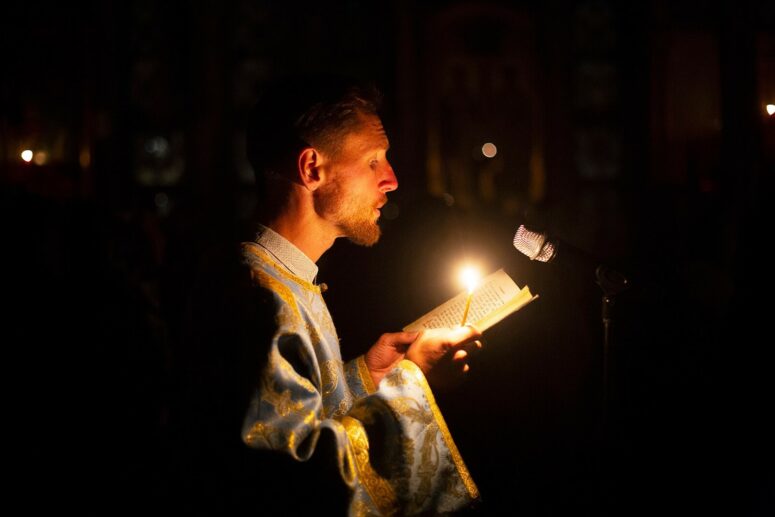
In modern practice, it is common to strive for the same repentant state, using a small amount of light during night and evening services, and completely extinguishing all lamps during the Six Psalms at the All-Night Vigil. The only exceptions to this rule are the reading candles, illuminating the Psalter, as well as the lamps next to the icons of Christ, the Mother of God and the iconostasis. On the other hand, church rubrics prescribe lighting all the lamps during festive and Sunday services, signifying the fullness of Divine Light, which will shine upon the faithful in the Kingdom of Heaven.
Candle Holders in the Altar
The sources of light used in the altar include an inextinguishable lamp in front of the tabernacle on the altar table and two altar candlesticks with candles in the corners of the eastern side of the altar. The commandment to keep eternal flame in the sanctuary was given by God to Moses in the Old Testament (see Lev. 24:1-4). On the east side of the altar, near or atop the altar table there is also a large seven-branched candlestick (menorah) with seven lamps or candles. This church attribute has been used since the days of the Tabernacle of Meeting. Christian theologians consider the menorah a symbol of the Holy Spirit, by Whom all sacred actions are performed, and through Whom Christ governs the Church.

A lamp and a candle are also placed on the credence table. A processional candle in a tall candlestick is placed on the synthronon. The latter is taken out of the altar during the service and placed in front of the Holy Doors during the reading of the Gospel and the communion of the priesthood.
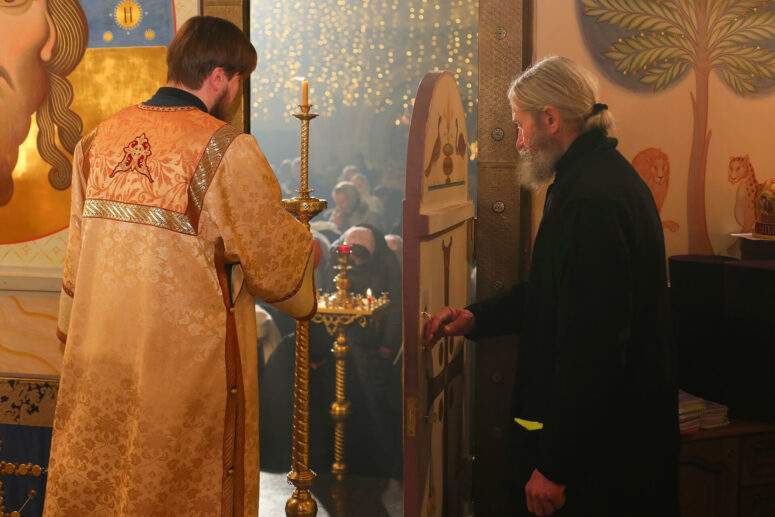
Among the altar utensils there are large deacon’s candlesticks. A deacon uses them as he goes before the priest during the censing of the church or a particular icon. In case two deacons are present at a service, the second of them follows the priest with a candle, using the same candlestick. Such a candle is believed to symbolize the light of the apostolic preaching, preceding the adoption of Christianity by the people. Another important symbolism is Christ Himself, coming into the world. The size of these candlesticks allows a deacon to raise the candle high enough, which adds solemnity to the moment and illustrates the words of the Savior: “No one after lighting a lamp puts it under the bushel basket, but on the lampstand, and it gives light to all in the house”.
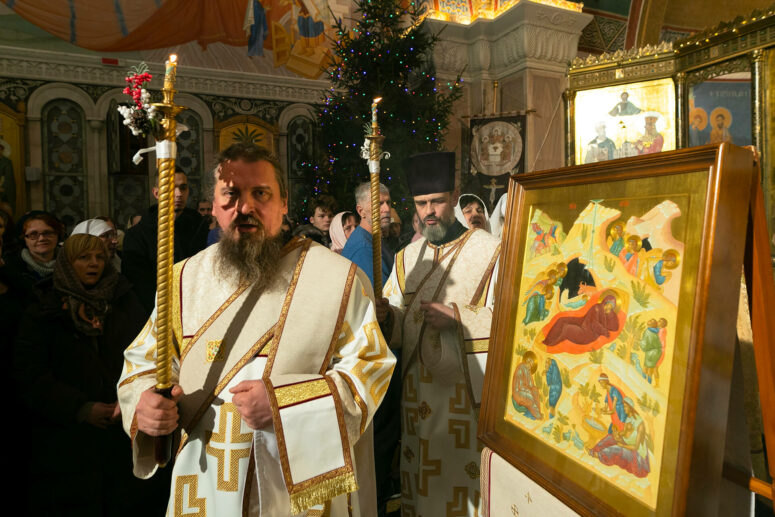
Two altar servers take the same candlesticks out of the altar during the Small Entrances at Vespers and the Liturgy, as well as the Great Entrance during the Liturgy and the Gospel readings. These candles signify the light of Christ’s preaching, as well as Christ Himself. The candle in the candlestick used during the Liturgy of the Presanctified Gifts, when the priest blesses the people with the words “The Light of Christ enlightens all”, has the same meaning.
If a bishop is present at a service, a candlestick for one candle is used, called a primikērios (translated from Greek as “pre-eminent”). In Byzantium, this term was originally used for a clergyman carrying a candle in front of the bishop. Today, such a candlestick is solemnly carried before the Primate of the local Church by his subdeacon.
Candles in the episcopal dikiria (dual candle) and trikiria (triple candle) also have particular spiritual significance. An archpastor uses them to bless the congregation during entrances. These elements of worship appeared in the Church around the 4th-5th centuries. According to known interpretations, two candles correspond to the two natures of Jesus Christ, and three candles signify the three persons of the Holy Trinity.
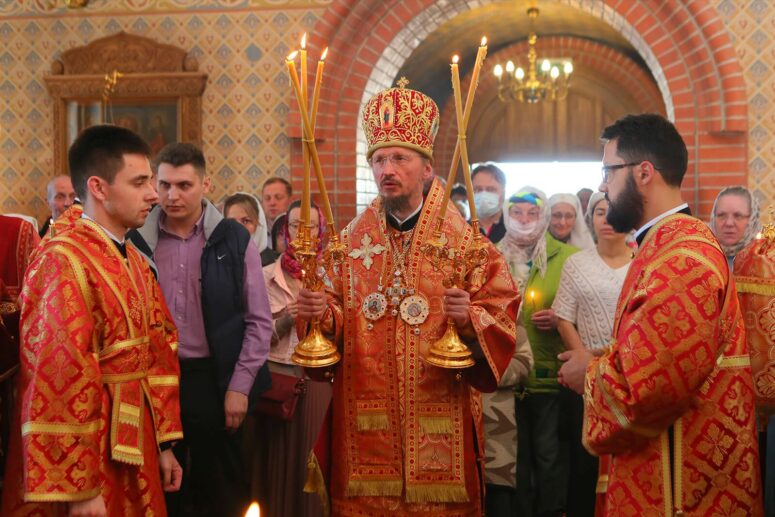
It is important to distinguish between a trikirion and a triple candlestick, with non-intersecting candles. The latter is used by the priest during Easter services.

The typicon includes a variety of cases when lit candles appear in the hands of the clergy. They symbolize the light of the gospel preaching and ardent love for God. During certain services and Sacraments, burning candles are also held by the congregation as a sign of special faith and love for the Savior and a prayerful appeal to Him.
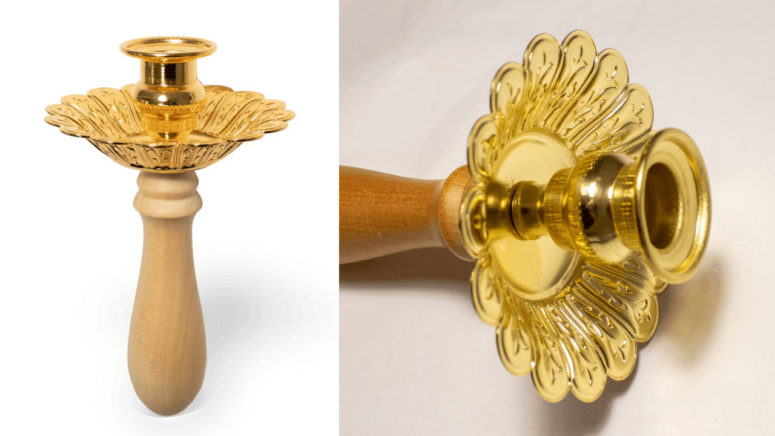
Finally, there is a processional lantern on a pole, kept in the altar and used to lead processions.
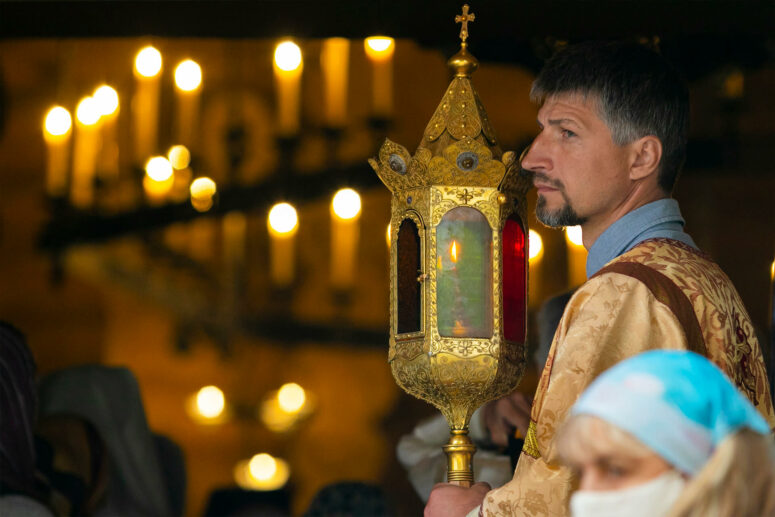
Vigil lamps near some of the altar icons are kindled during services in the same way as it is done in the nave. You can learn about their history and symbolism from this article.
The commandment to kindle a lamp in His glory was given by God to the Old Testament man and preserved during centuries until the Nativity of Christ and even to our days. However, the New Testament revised this tradition along with many others. Interpreting the parable of the ten bridesmaids, St Seraphim of Sarov compares the oil in their lamps with the grace of the Holy Spirit. Perhaps, looking at the heavenly light in church, we should also try to become such God-pleasing sources of light, maintaining the flame within us by spiritual vigilance, repentance and our unceasing striving for the Light.


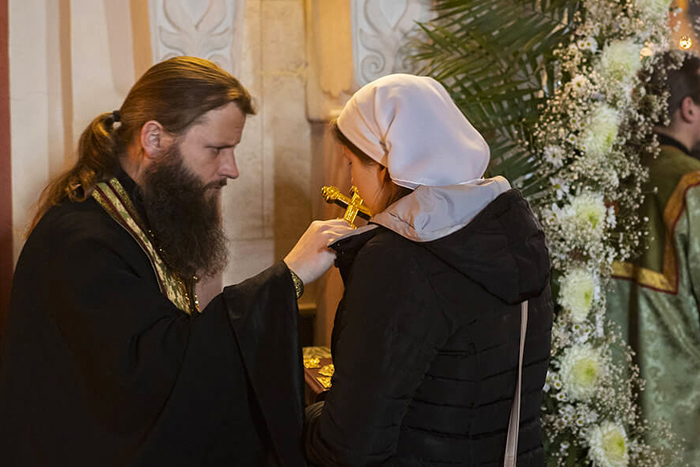
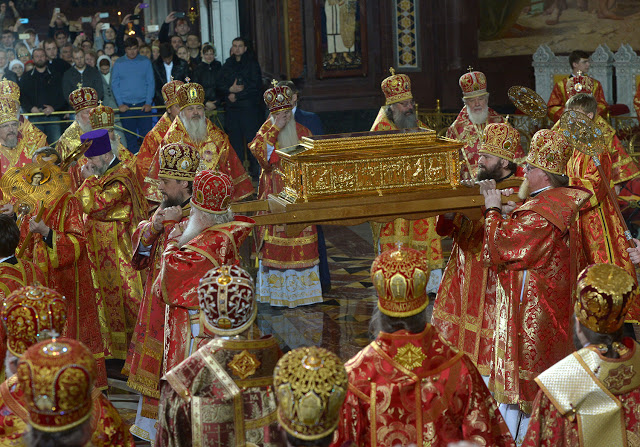

Ma I changed relegion please sir give me help I am interested very poor guy